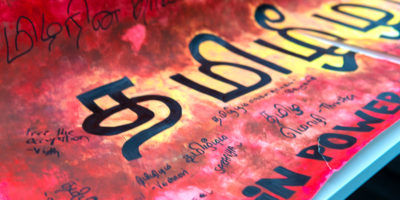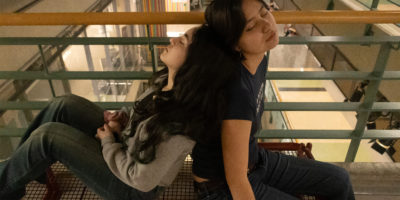The Danes
By Kevin Ritchie
There was a time when the red and white colours of Denmark’s national flag dominated the corner of Bloor and St. Thomas streets. The downtown area bustled with Danish merchants selling furniture and Danish restaurants serving traditional dishes such as smoked salmon and herring.
The small Danish district was an anomaly for a 20,000-strong community that has, for the most part, chosen to blend into Toronto’s multicultural landscape.
The first significant wave of Danish settlers came to Canada in 1872, forming a settlement in New Brunswick known as New Denmark. In the 1920s, a group of mostly butchers and sausage-makers began migrating to cities such as Toronto. By 1930, the Toronto Danish community had a church, a Sunday school, the Ladies Aid Society and the Dana College Choir.
Eva Terp, former publisher of Scandinavian Forum, a Toronto magazine, says most Danish immigrant spoke English when they arrived in Canada and were well educated, making it easy for them to blend in.
“The Danes are known to assimilate into their community,” says Terp, a member of the city’s Danish Women’s Association. “They tend to disappear into the woodwork.”
Toronto’s Danish community grew significantly in the 1950s, when the city’s thriving economy drew thousands of professionals and skilled workers such as carpenters, bricklayers, mechanics and electricians.
Arne Sorensen is one of those immigrants. The 79-year-old retired engineer sits sipping beer and nibbling on a small platter of cheese, grape and crackers at Tastefully Done, they city’s only Danish bistro, at Elm and Bay streets. He’s travelled all the way from Ajax for one of the bistro’s open-faced herring sandwich platters and a shot of akavit, a dry dill-flavoured liqueur.
The bistro’s chef remembers the days when Denmark’s national colours ruled Bloor and St. Thomas. For five years, Torben Budde worked at the Copenhagen Room Restaurant. The establishment, owned by the Danish Dairy Board, was part of the Danish government’s effort in the early 1980s to promote its cultural products outside Denmark.
The Copenhagen Room Restaurant, the upstairs Danish Food Centre and a Danish-owned furniture shop across the street helped create a hub for Toronto’s Danish community.
The cancellation of the dairy board’s program a few years later spurred a Danish exodus from the area. The Copenhagen Room toasted a final Skaal (cheers to your health) in 1990.
“Some of the food writers were like [the closing] is the worst thing that could’ve happened,” says Budde, who was trained as a chef in Denmark. “It was an institution on Bloor Street.”
Today, the boutiques of Yorkville have erased any trace of Danish culture at the corner of Bloor and St Thomas, and Toronto’s Danes have blended back into the woodwork.
The Somalis
By Mary Nersessian
In the 19th century, when Ethiopia, Italy, France and Britain colonized Somalia, the country’s people refused to respect the demands of their new leaders, choosing instead to remain faithful to their Somali roots.
The resistance was led by Somali freedom fighter Sayid Mohammed Abdulle Hassan, who battled for 20 to 30 years before Britain aimed a series of air strikes against him and his army.
While the Somali experience in Toronto has not been volatile, the city’s 70,000 Somalis appear to be just as adamant about remaining faithful to their culture.
“We want to be known as people who preserve their culture and religion, who are not assimilated,” says Jama Jama, an employee of the Alaqsa grocery store on Dundas Street West near Bloor Street West.
“There are rarely intermarriages, and when they occur, you are pushed out of the Somali community.”
Toronto’s first wave of Somali immigrants included political refugees who arrived following the Ethiopian-Somali war of 1977.
In March, 1987, meetings were held in Toronto, Ottawa and Montreal to discuss how to meet the needs of the growing Somali community.
Despite the programs, adjusting to life in Toronto wasn’t easy for Jama. He came to Toronto to escape the civil war, but says he would go back immediately if the war ended.
Religion is a key part of Somali life. Somalis are devout Muslims and have their own mosque in Rexdale, where they gather to pray, listen to speakers and participate in activities. “From the moment you wake up, and even drink water, you must thank God,” Jama says. “Without religion, we will be animals, and Allah gives us something to follow for inspiration and guidance.”
Somalis’ religion sets out rules for almost every aspect of their life, including eating, drinking and dressing. It’s all a part of remaining faithful to their roots.
“Look at this boy now,” says Jama, shaking his head disapprovingly at a Somali teenager who has just entered the Alaqsa grocery store. “Look at his baggy trousers down to his kneew. This is the danger that we face, of our children assimilating.”
The Filipinos
By Louie Diaz Jr.
The smell of pork rinds wafts from the back of a tiny grocery store on Queen Street West in Parkdale. Inside, customers stand in front of freezers filled with delicacies such as bangus (milkfish), and shelves stocked with canned goods from the Philippines.
At first glance, there appears to be nothing extraordinary about the store. But when you peer closer, you notice customers from places such as Mississauga and Scarborough placing special orders for lechon (barbecued suckling pig) and raving about pork rinds.
Thirty years ago, Bernardo and Celi Farrol opened this grocery store, the first Filipino shop in the city. Today, Bernard’s Philippino Specialties is widely known in the community, and has become a gathering place for Filipinos in Parkdale.
The Farrols immigrated to Canada in 1962. “There were only 30 Filipinos in Toronto back then,” Bernardo, 68, says. “We were all professionals. Me and my wife were nurses.”
Records show the first Filipino immigrant to Canada arrived in 1931. Up to the early 1950s, just 10 Filipinos had made the country their home.
Today, Filipinos make up the eight largest immigrant group in Toronto, with about 81,000 people. There is not “Little Philippine” though, as the community is spread out across the greater Toronto area.
“Of course there are a lot more Filipinos in Toronto now, but they are diepsering everywhere,” Bernardo says.
He and Celi spent their first eight years in Toronto working at hospital before deciding to open their grocery store. At one point, they ran two businesses, Bernard’s and a small travel agency. “Ninety-five per cent of our business was from Filipinos here going back to the Philippines for a vacation,” Celi, 66, says. They closed the travel agency in 1993, when Celi suffered a stroke that left her in a wheelchair.
The couple is now looking forward to retirement. “We’re going back to the Philippines. We’re not needed here anymore,” Bernardo says. “Our legacy is left in the Toronto community.”
The Iranians
By Gehna Singh
Karim Hakim began his optical empire by grinding lenses for wholesalers shortly after he arrived in Toronto 33 years ago.
Hakim was one of the first Iranians to immigrate to the city. He learned how to make lenses in his native country, and honed his skills in Germany and Switzerland before coming to Canada to pursue his business aspirations.
Three decades later, 77 Hakim Optical stores dot Ontario, Nova Scotia and New Brunswick. “By nature, immigrants are less spoiled,” Hakim says. “They do work harder and therefore have more opportunity to succeed.”
Sitting in his Yorkville office, Hakim is surrounded by works of Iranian art. He says he faced many challenges on his path to becoming one of Canada’s largest optical retailers. Racism, however, wasn’t one of them. During his 33 years in Toronto, Hakim recalls facing just one incident of racism. It happened during a meeting with a bank manager who refused to give him a loan and questioned how an immigrant could have become so successful so quickly. “He couldn’t understand that an Iranian immigrant could drive a Rolls Royce and have a higher standard of living.”
Most of Toronto’s 60,000 Iranians are highly educated people such as doctors, engineers and lawyers who arrived here in the 1980s. For them, the Iran of 1979 is one that still holds unsettling memories.
It was a time of political upheaval, when a revolutionary group made up of Islamic clergymen overthrew the Shah of Iran, Reza Pahlavi.
The group was led by a man named Khomeni who had returned to Iran from exile and, in a short time, managed to throw the whole country into chaos. Khomeni gained control of the military and judicial systems, persecuting those with any affiliation to the Shah.
War broke out between Iran and Iraq shortly after the revolution, and many who were able to leave did.
Although the community still has strong emotional ties to Iran, many Iranians now refer to Canada, specifically Toronto, as their home.
“Canada has been very good to me and I am good to Canada,” Hakim says. “This is my home. I would protect this land with my life.”










Leave a Reply